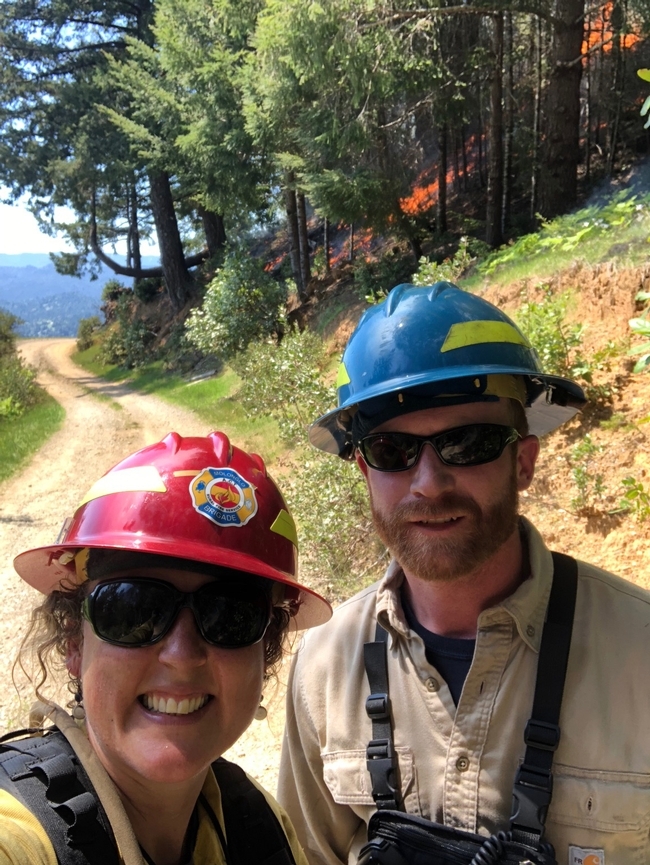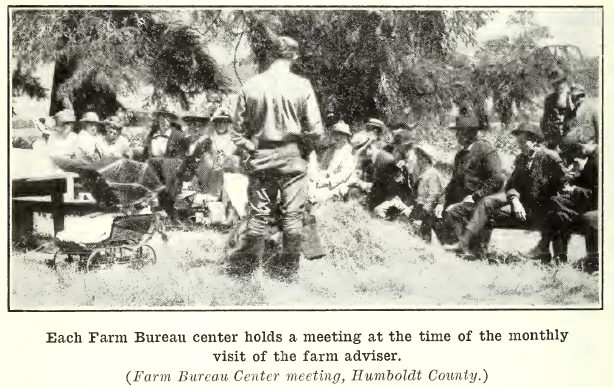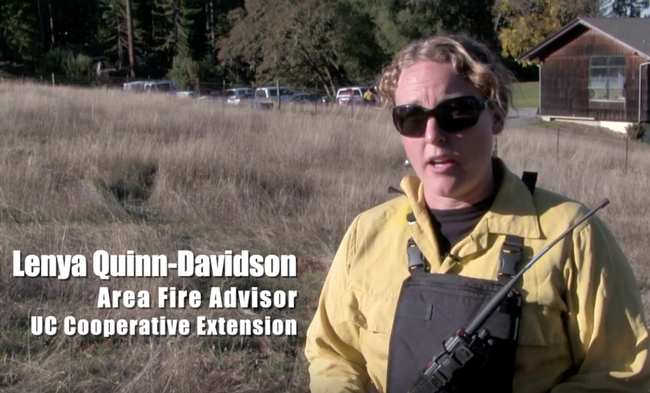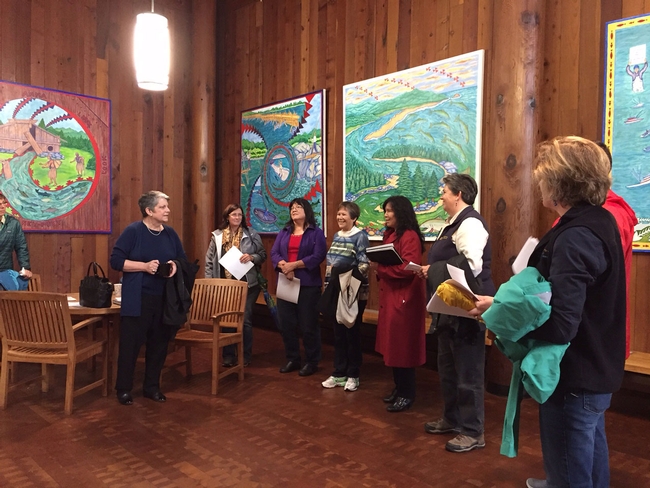
Posts Tagged: Humboldt
Humboldt County’s Prescribed Burn Association teaches the value of fire
On a crisp and clear morning late last year, around 20 volunteer firefighters, landowners and community members gathered on a plot of land outside of the small rural community of Kneeland in Humboldt County. They listened intently to detailed instructions on how to safely burn 20 acres of private property that gradually rises on a hill before them. The volunteers gathered to learn how to successfully undertake a prescribed burn. It was all part of the ongoing education and training being conducted by Humboldt County's Prescribed Burn Association – the first of its kind west of the Rockies.
Lenya Quinn-Davidson and Jeffery Stackhouse, who both work for the UC Cooperative Extension in Humboldt County, developed the program in 2017 and have seen it steadily grow ever since. The association is comprised of landowners, nonprofits, volunteer firefighters and other community members who work together to carry out prescribed burns on private land. Until the association was created, most landowners and community members had lacked access to prescribed burn information and training.
“Fire is a natural part of California's landscape. Prescribed fire is a way for us to bring fire back to the landscape as a natural process under controlled conditions. We can choose the weather, we can choose how it's going to burn,” says Quinn-Davidson. “Private landowners have largely been left out of the fire picture and we realize that is a big part of the problem.”
The goal of the prescribed burn on that October day was to eliminate an invasive type of tree that was overtaking the grassy hill and restore the land to a state where native oaks can thrive once again. The property owners are receiving the same training as the volunteer firefighters on hand. Beyond eliminating invasive species, the association is utilizing prescribed burns to reduce fuels to prevent future wildfires, as well as restore wildlife habitat. But most importantly, the training and education empowers landowners and others to reconnect with fire as a management tool.

Will Emerson is an assistant fire chief for the volunteer Bell Springs Fire Department in northern Mendocino County. He and his three colleagues made the 2.5-hour trip to participate in the prescribed burn training session in Humboldt County. He sees the trainings as a “really great experience” for volunteer fire departments, some of which have new trainees who have never worked a fire before.
“It's excellent training for them — just to get comfortable working with fire,” Emerson says.
The concept of a prescribed burn association is catching on. Quinn-Davidson and Stackhouse have presented the Humboldt County model to numerous counties around the state, and new associations are cropping up around California.
“We use our program to train people, to inspire people, to empower people,” Quinn-Davidson says.
The value of Humboldt County's Prescribed Burn Association goes beyond the training it provides. Quinn-Davidson and Stackhouse view the association as a “community cooperative,” bringing together groups that have traditionally been at odds. At any training session you may find volunteers from the ranching or timber industry, environmentalists or cannabis growers.
“Instead of being on opposite sides of an issue, people are gaining understanding for the other side,” Stackhouse says. “It has opened the door for real, honest communication between different groups that otherwise would not be happening. Having people work together who have been on different sides of the community really is amazing.”
Quinn-Davidson agrees. “We are building community and we are using fire as this positive, synergistic thing,” she concludes. “And I feel so positive about it.”
The CSAC Challenge Awards were created in the early 1990s to recognize county innovation and best practices. Humboldt County's Prescribed Burn Association is a recipient of a 2019 CSAC Challenge Award – one of only 18 Challenge Awards presented statewide out of 284 entries.
To view a video of this program on YouTube, click here.
Local ingredients are key to winning a UCCE quinoa recipe contest
Northern California cooks are encouraged to enter their best quinoa recipes in a contest next month co-sponsored by the UC Cooperative Extension Master Food Preservers Program, reported Heather Shelton in the Eureka Times-Standard.
"Quinoa is such an interesting food and there is quite a bit grown here in Humboldt," said Jennifer Bell, a UC Master Food Preserver who is working with UC Cooperative Extension and the North Coast Co-op to offer the contest.
People consume quinoa like a grain, though it isn't a true grain. It is a complete protein and considered a superfood.
Quinoa "is higher in protein than many grains and low in fat, it is relatively inexpensive, it is versatile in dishes, it is tasty, with a crunchy texture and a nutty flavor and it is gluten free," Bell said.
In the spirit of local food month, the judges encourage participants to include as many local ingredients as possible in their recipes, especially locally grown quinoa. The winners will be selected based on the percent quinoa in the recipe, taste, appearance, use of local ingredients and creativity.
The contest has five categories: appetizer, breakfast, salad, burger/meatball and dessert. Participants may enter once in each category.
Recipes for the Great Quinoa Recipe Contest must be submitted online by Sept. 10. Enough food for sampling by five judges should be dropped off between 1 and 2 p.m. Saturday, Sept. 15., at the UC Cooperative Extension office, 5630 S. Broadway, Eureka. Winners in each category will receive a crown and a prize.
The public is welcome from 3 to 5 p.m. Sept. 15 to view a short film, watch a low-sugar jam demonstration using quinoa, taste quinoa and take part in a quinoa Q&A session.
UC president Janet Napolitano and UC ANR vice president Glenda Humiston tour Humboldt
Janet Napolitano, who is on a two-day tour in Humboldt County, is the first UC president to visit the Northern California locale, reported Marc Vartabedian in the Eureka Times-Standard. Napolitano is joined by Glenda Humiston, vice president of UC Agriculture and Natural Resources.
Napolitano and Humiston are visiting an Indian health services facility, a seafood company, a forest and a high school. UC has had a long presence in Humboldt County. Humboldt was the site of the first UC Cooperative Extension office in California, established in 1913.
“UC has had 100 years of research presence in the Arcata forest and many of their campuses are world leaders in ecological research,” said Yana Valachovic, director of UC Cooperative Extension in Humboldt County. “We think of ourselves as the eleventh campus.”
Humboldt hosts 'Let's Get Local' farm tours to celebrate centennial
A series of "Let's Get Local' farm tours are running from now till Oct. 12 to mark the centennial of UC Cooperative Extension in Humboldt County, reported the North Coast Journal. Stories about the tours also appeared in the Times-Standard and the Redwood Times.
The tours are designed to show residents a slice of Humboldt County via industries that have sustained the area. Tours cover every aspect of agriculture and other well-known local industries, the article said. For example, in June, UCCE hosted an oyster tour and on July 12, participants got a look at the grass-fed beef industry. A "Veggies and Wine Grapes Tour" takes place Aug. 11 and the Oct. 2 tour features the DG Fairhaven biomass plant.
On Sept. 13, UCCE in Humboldt holds a gala celebration to commemorate its 100-year anniversary. The festivities will go from 5:30 to 9 p.m. at the Arcata Community Center. Dress will be casual, and the event is open to the public. Find details on the Humboldt UCCE website http://cehumboldt.ucanr.edu.

An ag tour with county agricultural agent J.W. Logan, DVM, in 1928.
Humboldt County led the state in establishing UC Cooperative Extension
One hundred years ago, UC Cooperative Extension was established in Humboldt County, California, a full year before the tide swept across the United States driven by the U.S. Congress Smith-Lever Act of 1914, which created such programs to serve farmers and rural families throughout the country.
The Humboldt's pioneering UCCE program was featured in a story that appeared in the Eureka Time-Standard. The rest of the UC Cooperative Extension programs will mark their 100th anniversary next year.
"We're a 100-year-old program that's been about investing in communities and people and industries,” said Yana Valachovic, UCCE country director and advisor in Humboldt County. ”It's empowerment through knowledge, empowerment through new ideas, empowerment through best practices."
In 1913, the Humboldt timber and agriculture industries were anticipating passage of the Smith-Lever Act when they organized the first farm bureau and allocated county funding to support the extension effort. That year, Humboldt County was assigned California's first farm advisor, Andy Christiansen of Ferndale.
”We really were an economic powerhouse when you think about it,” Valachovic said. “We were quite large in population, we were producing lots of goods. So it made some sense that the University of California and Humboldt County and the farmers would all come together and say, 'alright, let's figure out how to enable and put better scientific expertise within our community, so that we can work on improving our practices and improving our production and improving our overall sustainability.'”

California's first farm advisor.



